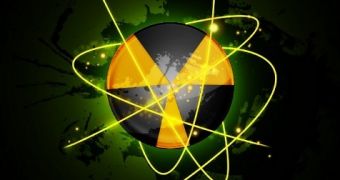Tokyo Electric Power Company, otherwise known as Tepco, now has its hands full decommissioning the Fukushima nuclear plant in Japan. By the looks of it, the company could soon get some help cleaning up this site and its surrounding area from something as simple as algae and plants.
A recent paper in Springer's Journal of Plant Researcher documents the discovery of as many as seventeen different species of microalgae, aquatic plants and algae that scientists say are surprisingly gifted at removing radioactive material from the environment.
More precisely, these organisms are said to be quite efficient at cleaning up natural ecosystems of the radioactive cesium, iodine and strontium that reached them in the aftermath of the Fukushima disaster in March 2011.
Of the seventeen types of microalgae, aquatic plants and algae that researchers say can help reduce radioactive contamination in the Fukushima area, one appears to be extraordinarily efficient at removing cesium from the environment, Scient Blog reports.
Thus, this organism, i.e. a unicellular algal strain dubbed nak 9, is said to be able to eliminate some 90% of the cesium present in a given environment. What's more, it does so without needing any special treatment, the same source details.
Hence, specialists believe that, at some point, it will be possible to use this algae strain to decontaminate the polluted water currently stored in the nuclear reactor buildings at Fukushima. The algae could also serve to clean other contaminated waters in the area.
“Biological concentration of radionuclides is an essential technology for bioremediation of radio-polluted soils and water,” explains study lead researcher Yoshihiro Shiraiwa of the University of Tsukuba.
“Therefore our results provide an important strategy for decreasing radiopollution in the Fukushima area,” the specialist goes on to explain.
The microalgae, algae and plants now studied by Yoshihiro Shiraiwa and his colleagues are all fairly easy to harvest and dry. Because of this, the scientists say that there is a good chance that they can be used to carry out large-scale cleaning operations.

 14 DAY TRIAL //
14 DAY TRIAL //